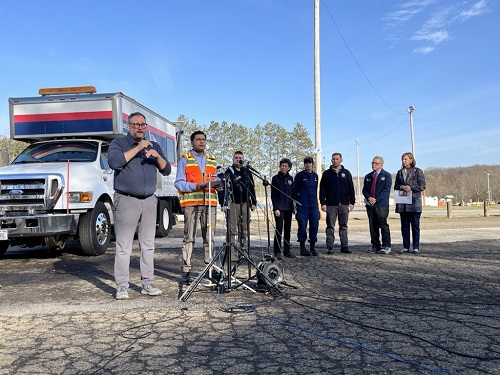The Federal Railroad Administration has unveiled a new national initiative for focused inspections on routes that carry high-hazard flammable trains or HHFTs and other trains carrying large volumes of hazmat commodities.
[Above photo by the FRA]
This new effort follows the catastrophic February 3 derailment of a Norfolk Southern freight train in East Palestine, OH, that resulted in the spillage of thousands of gallons of vinyl chloride and other chemical substances, followed by a deliberate burn off in an effort to prevent them from exploding.

Working with Pipeline and Hazardous Materials Safety Administration, FRA said it plans to identify those “high-hazard” routes and prioritize them for inspection beginning immediately. The inspections will start in East Palestine and expand to communities nationwide.
The FRA said its inspectors, using a combination of human visual inspections and technology, will assess the overall condition of rail infrastructure as well as railroad compliance with FRA regulatory requirements governing track. Information will then be shared with railroads as well as rail labor organizations, and it will be periodically published for the public to increase transparency.
FRA added that Automated Track Inspection Program or ATIP inspection vehicles, which are paired with human inspections, surveyed approximately 180,000 miles of track last year and help remediate around 10,000 track safety defects annually.

“FRA is vigorously responding to the concerns expressed by residents of East Palestine and the surrounding areas, and as a result of the recent derailment, we are ramping up our safety efforts across the country,” said Amit Bose, administrator for the agency, in a statement.
“FRA will begin ATIP and visual inspections of Norfolk Southern Railway track in the vicinity of East Palestine,” he added.
“Many more inspections will follow, and the data that they yield will allow us, as well as railroads, labor, and State and local governments, to implement better-informed decisions and policies regarding rail safety,” Bose noted.
 Nation
Nation
Registration Open for AASHTO’s Winter Rail Meeting
December 19, 2025 Nation
Nation

